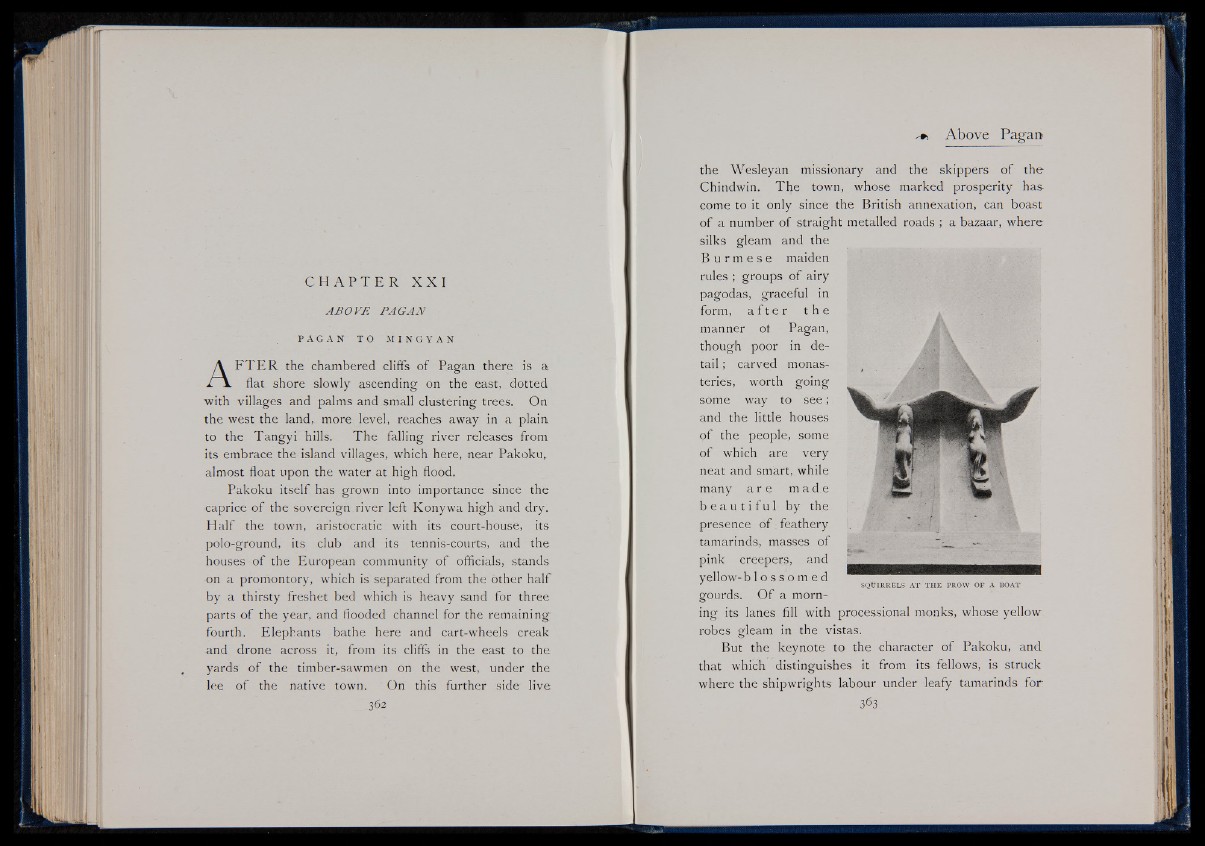
C H A P T E R X X I
A B O V E P A G A N
P A G A N TO M I N G Y A N
AFTER the chambered cliffs of Pagan there is a
flat shore slowly ascending on the east, dotted
with villages and palms and small clustering trees. On
the west the land, more level, reaches away in a plain
to the Tangyi hills. The falling river releases from
its embrace the island villages, which here, near Pakoku,
almost float upon the water at high flood.
Pakoku itself has grown into importance since the
caprice of the sovereign river left Konywa high and dry.
Half the town, aristocratic with its court-house, its
polo-ground, its club and its tennis-courts, and the
houses of the European community of officials, stands
on a promontory, which is separated from the other half
by a thirsty freshet bed which is heavy sand for three
parts of the year, and flooded channel for the remaining
fourth. Elephants bathe here and cart-wheels creak
and drone across it, from its cliffs in the east to the
yards of the timber-sawmen on the west, under the
lee of the native town. On this further side live
362
the Wesleyan missionary and the skippers of the
Chindwin. The town, whose marked prosperity has-
come to it only since the British annexation, can boast
of a number of straight metalled roads ; a bazaar, where
silks gleam and the
B u rme s e maiden
rules ; groups of airy
pagodas, graceful in
form, a f t e r the
manner ot Pagan,
though poor in detail
; carved monasteries,
worth going
some way to se e ;
and the little houses
o f the people, some
of which are very
neat and smart, while
many a r e made
b e a u t i f u 1 by the
presence of feathery
tamarinds, masses of
pink creepers, and
yJellow- b l o s s ome d SQUIRRELS AT THE PROW OF A BOAT
gourds. O f a morn--
ing its lanes fill with processional monks, whose yellow-
robes gleam in the vistas.
But the keynote to the character of Pakoku, and
that which distinguishes it from its fellows, is struck
where the shipwrights labour under leafy tamarinds for